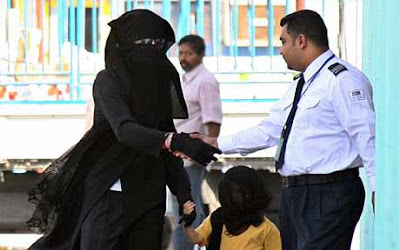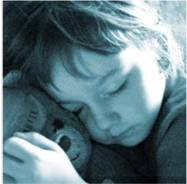In pictures: A-Z of word surprisesWhen I set out to write a study of the history of
words, I thought I had a decent grasp of where even the most curious
English ones
originate. Those with the prefix al- - as in alchemy and alcohol - often have Arabic roots, and many seafaring terms - skipper, schooner, land-lubber - are Dutch.

But there were plenty of surprises. Who knew that marmalade, for instance, while eternally associated in my mind with Paddington Bear, is in fact Portuguese? So here is an
A-to-Z of some of my favourite
English words that have been absorbed from and inspired by other languages.
A is for…Avocado, which comes from Nahuatl, a language spoken by the Aztecs. Their name for it, ahuacatl, also meant ''testicle".
B is for…Bonsai. Although we think the tree-cultivating art is Japanese, it originated in China.
C is for…Coleslaw. Supposedly eaten in ancient Rome, it comes from the Dutch kool-salade (''cabbage salad").
D is for…Dachshund, a compound of the German Dachs (''badger") and Hund (''dog"). Originally the breed was known in Germany as Dachs Krieger, or ''badger warrior".
E is for…Enthusiasm. From the Greek entheos, which means ''to be within energy", suggesting being spiritually ''possessed".
F is for…Flamenco, from the Spanish name for a Fleming (i.e. someone from Flanders).
G is for…Goulash, an invention by Hungarian herdsmen whose name derives from gulyas.
H is for…Hotchpotch, used in Norman legal jargon to denote property collected and then divided.
I is for…Intelligentsia, a collective term for the intellectual class which derives from Latin but came to us from Russian.
J is for…Juggernaut, Sanskrit for a giant carriage used to transport an image of the god Krishna.
K is for…Kangaroo, from gangurru, the large black male roo in the Guugu Yimidhirr language.
L is for…Lilac, which comes from the Persian nilak, meaning ''of a bluish shade".
M is for…Mandarin. The name of the fruit feels as though it ought to be Chinese, but may well have come from Swedish.
N is for…Namby-pamby. Nickname of the 18th-century poet Ambrose Phillips, coined by the satirist Henry Careybecause of his sentimental verses
O is for…Onslaught, from the Dutch aanslag - related to a word in Old High German for a shower.
P is for…Penguin, a compound of two Welsh words, pen and gwyn, which mean ''head" and ''white" - even though penguins have black heads. It is likely that 'penguin' was at one time the name of similar, now extinct bird which had a white patch near its bill.
Q is for…Quack can be traced to the Dutch kwaksalver, literally someone who hawked ointments.
R is for…Regatta, from Venetian dialect, it originally signified any kind of contest.
S is for…Sabotage. Supposed to derive from the tendency of striking workers to damage machinery by throwing shoes into it - sabot being an old French word for a wooden shoe.
T is for…Tattoo, Captain Cook saw Polynesian islanders marking their skin with dark pigment. Long before that the word signified a signal or drumbeat, a Dutch expression for 'Close off the tap', used to recall tippling soldiers.
U is for…Umbrella, appeared in English as early as 1609 (in a letter by John Donne). In the middle of the 18th century the device was adopted by the philanthropist Jonas Hanway as a protection against the London rain.
V is for…Vanilla, ''little sheath" in Spanish.
W is for…Walnut, a modern rendering of the Old English walhnutu ('foreign nut'), so known because it grew mainly in Italy.
X is for…Xebec, a little vessel with three masts, from the Arabic shabbak, a small warship.
Y is for…Yogurt, a mispronunciation of a Turkish word.
Z is for…Zero, whose immediate source is French or Italian, but its
origins are in Arabic - and before that in the Sanskrit word sunya, which meant both ''nothing" and ''desert".















 But there were plenty of surprises. Who knew that marmalade, for instance, while eternally associated in my mind with Paddington Bear, is in fact Portuguese? So here is an A-to-Z of some of my favourite English words that have been absorbed from and inspired by other languages.
But there were plenty of surprises. Who knew that marmalade, for instance, while eternally associated in my mind with Paddington Bear, is in fact Portuguese? So here is an A-to-Z of some of my favourite English words that have been absorbed from and inspired by other languages. The eye-catching
The eye-catching  The idea was conceived by advertising agency Ogilvy & Mather, who were commissioned by banking giant HSBC to promote its £50million project tackling climate change.
The idea was conceived by advertising agency Ogilvy & Mather, who were commissioned by banking giant HSBC to promote its £50million project tackling climate change.






 The singer, who was raised as a Jehovah's Witness, converted to Islam in a ceremony at a friend's house in Los Angeles.
The singer, who was raised as a Jehovah's Witness, converted to Islam in a ceremony at a friend's house in Los Angeles.










 1. "Hi, I'm Danny and I'll be your host. Buzz along…"
1. "Hi, I'm Danny and I'll be your host. Buzz along…" 3. This species of aliens has fooled humans for many years. Popularly known as a bumblebee of the Apidae family, they have donned a fuzzy yellow-and-black fur and spread rumours that some of them are stingless. Right, whatever, just careful with that … thingy, dude!
3. This species of aliens has fooled humans for many years. Popularly known as a bumblebee of the Apidae family, they have donned a fuzzy yellow-and-black fur and spread rumours that some of them are stingless. Right, whatever, just careful with that … thingy, dude! 4. "Listen to me,
4. "Listen to me, 
 6. "I might look cute but I can sap you out!" Treehoppers have long fascinated biologists because of their unusual appearance. They belong to the Membracidae family and are closely related to cicadas and leafhoppers. They feed upon the sap found in plant stems, which they prick with their beaks.
6. "I might look cute but I can sap you out!" Treehoppers have long fascinated biologists because of their unusual appearance. They belong to the Membracidae family and are closely related to cicadas and leafhoppers. They feed upon the sap found in plant stems, which they prick with their beaks. 7. This praying mantis male would certainly score a role in any alien movie. His acting talent is undisputed as he's part of the flower mantis species - they pretend to be flowers and then attack their prey. How very cunning, indeed.
7. This praying mantis male would certainly score a role in any alien movie. His acting talent is undisputed as he's part of the flower mantis species - they pretend to be flowers and then attack their prey. How very cunning, indeed. 8. "Who you're calling an alien? Our ancestors have been around since 350 million BC!" Wasps are said to be terrestrial but some of them look positively extra-terrestrial. Though often called
8. "Who you're calling an alien? Our ancestors have been around since 350 million BC!" Wasps are said to be terrestrial but some of them look positively extra-terrestrial. Though often called  9. "Call me a
9. "Call me a  10. This praying mantis looks straight out of Alien or Men in Black… No prizes for guessing who inspired whom.
10. This praying mantis looks straight out of Alien or Men in Black… No prizes for guessing who inspired whom.